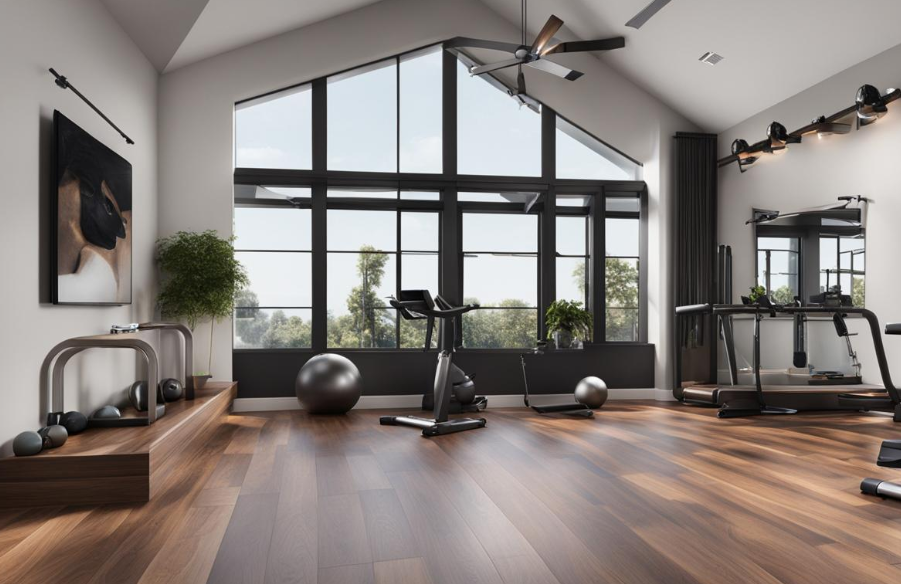
Durable Floors for Serious Workouts
When setting up a gym—whether it’s a compact studio, corporate fitness room, or full-scale commercial facility—the flooring you choose will directly influence performance, safety, maintenance, and overall atmosphere. Among all the materials available, rubber gym flooring stands out as the most practical and reliable solution for both strength and cardio environments. It’s durable, shock-absorbent, slip-resistant, and incredibly versatile, making it the go-to option for fitness centers around the world.
In this article, we’ll explore the key advantages of rubber gym flooring, the various types available, considerations for selecting the best option, and tips for long-term maintenance to ensure your investment performs for years to come.
Why Rubber Gym Flooring Is the Preferred Choice
There are multiple reasons why gym owners and facility designers consistently choose rubber gym flooring over other materials like foam, PVC, or hardwood. It offers unmatched durability and performance across a wide range of use cases.
1. Superior Shock Absorption
Rubber provides excellent cushioning underfoot. Whether it’s barbell drops in the free weight area or fast footwork during HIIT workouts, rubber floors absorb the impact, protecting joints and reducing fatigue.
2. Exceptional Durability
One of rubber’s biggest strengths is its ability to withstand constant abuse. Commercial gyms experience heavy traffic, dropped equipment, and high-pressure cleaning. Rubber doesn’t crack, chip, or wear easily, even with years of continuous use.
3. Non-Slip Safety
The naturally grippy texture of rubber gym flooring helps prevent slips and falls, even in areas exposed to sweat or water. It keeps users steady during lifts and fast-paced exercises.
4. Noise and Vibration Reduction
Dropped weights, running treadmills, and machine vibrations can create a lot of noise. Rubber helps to dampen both sound and vibration, resulting in a quieter and more comfortable gym environment.
5. Equipment Protection
Rubber floors create a soft buffer between gym equipment and the subfloor. This protects the integrity of expensive machines and reduces maintenance and replacement costs.
See also: Qeepsake Net Worth: Shark Tank Business Financial Insights
Common Types of Rubber Gym Flooring
There are several types of rubber flooring designed for gym environments. Each has unique advantages and is suited to different applications within the facility.
Rubber Tiles
Interlocking rubber tiles are among the most popular options for modular installation. They fit together like puzzle pieces, allowing easy replacement and layout flexibility.
- Best for: Free weight zones, cardio rooms, home gyms
- Pros: Easy to install, customizable layout, replaceable sections
- Cons: May shift if not properly secured in high-traffic zones
Rubber Rolls
Rubber rolls offer seamless coverage for large areas, making them ideal for commercial gyms and group training studios. They provide uniform thickness and a sleek appearance.
- Best for: Full-floor coverage in commercial spaces
- Pros: Fewer seams, stable under equipment, professional look
- Cons: Heavy and may require professional installation
Rubber Mats
These are individual mats that can be placed under specific machines or workout stations. They’re useful for targeted floor protection and spot cushioning.
- Best for: Under treadmills, lifting platforms, or dumbbell racks
- Pros: Portable, cost-effective, excellent for spot use
- Cons: May not stay in place unless secured
Thickness and Density Guide
Choosing the right thickness and density depends on how you plan to use the space.
- ¼ inch (6mm): Suitable for light cardio, stretching, yoga, or basic fitness rooms
- ⅜ inch (9.5mm): Ideal for functional training zones and moderate weightlifting
- ½ inch (12mm): Perfect for heavy strength training and areas with frequent weight drops
- ¾ inch (18mm) and up: Recommended for Olympic lifting platforms or CrossFit-style workouts
Thicker flooring offers greater impact resistance but can be more expensive and heavier. Consider your needs carefully before choosing the right thickness.
Where to Use Rubber Flooring in a Gym
Rubber is highly adaptable and works well in many areas of a gym. Here are the most common use cases:
| Area | Recommended Rubber Flooring Type |
|---|---|
| Free Weight Area | ¾ inch thick interlocking or roll flooring |
| Cardio Machine Zone | ⅜ inch rubber rolls |
| Functional Training | ½ inch rolls or tiles |
| Stretching/Yoga Space | ¼ inch tiles or mats |
| Entryways/Locker Rooms | Slip-resistant rubber tiles |
Installing the right rubber flooring in the correct area ensures both performance and longevity.
Key Features to Look For
Before purchasing rubber gym flooring, it’s important to look at certain key qualities:
- High Density: Dense rubber offers more shock absorption and holds up better under pressure.
- Non-Porous Surface: Non-porous or sealed rubber is easier to clean and more hygienic.
- Eco-Friendly Materials: Recycled rubber flooring made from used tires is sustainable and cost-effective.
- Beveled Edges: This reduces tripping risks and creates smooth transitions between sections.
Installation Tips
Professional installation is recommended for large commercial areas, but many gym owners prefer DIY setups for smaller spaces. Here are some tips:
- Prepare the Subfloor: Clean and level the subfloor before placing any mats or rolls.
- Secure Edges: Use double-sided tape or rubber adhesive to prevent shifting.
- Allow Time to Settle: Let rubber flooring sit unrolled for a day to relax and flatten before installation.
- Plan Layout Carefully: Consider the direction of traffic and use edge ramps where needed.
Easy Maintenance for Long-Term Performance
One of the biggest advantages of rubber gym flooring is how easy it is to maintain:
- Daily Cleaning: Sweep or vacuum to remove dust, chalk, and debris.
- Weekly Mopping: Use a mild pH-neutral cleaner and damp mop.
- Avoid Harsh Chemicals: Solvents and bleach can degrade the rubber’s surface.
- Address Spills Immediately: Rubber is water-resistant but standing moisture can still lead to mildew if ignored.
With minimal care, rubber flooring can last 10–15 years or more, even in high-use areas.
Aesthetic and Branding Options
Modern rubber flooring is not limited to solid black. Today, gym owners can choose from a range of color speckles, textures, and even custom branding options. Colored flecks help mask dirt and wear while giving the gym a more energetic and vibrant feel. Custom logos or zone colors can also be embedded into the floor to reinforce brand identity and improve navigation.
Final Thoughts
There’s a reason why gym owners, fitness chains, and trainers all rely on rubber gym flooring it’s the perfect combination of strength, support, safety, and style. Whether you’re protecting your equipment, safeguarding your members, or simply trying to create a professional space that looks great, rubber flooring delivers on all fronts.
From weight rooms to stretching zones, installing the right rubber solution will improve functionality and elevate the gym experience for everyone. Investing in high-quality rubber flooring now means fewer repairs, reduced risk of injury, and a cleaner, more welcoming facility in the long run.




